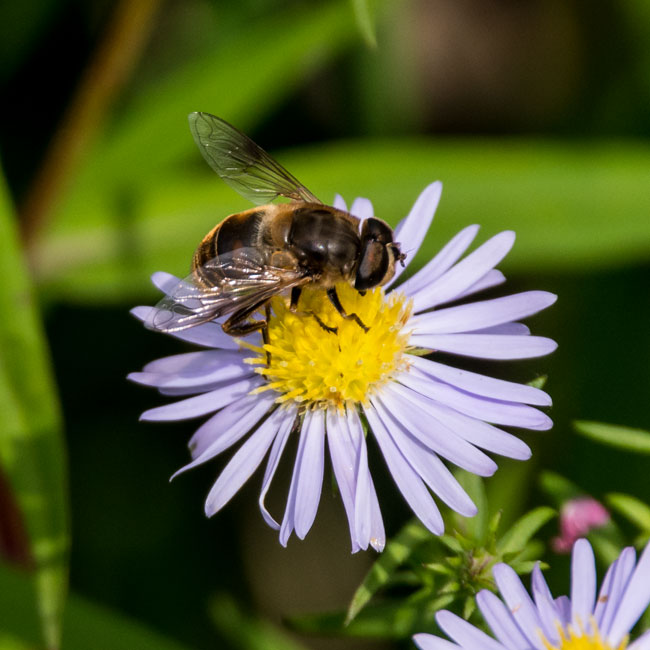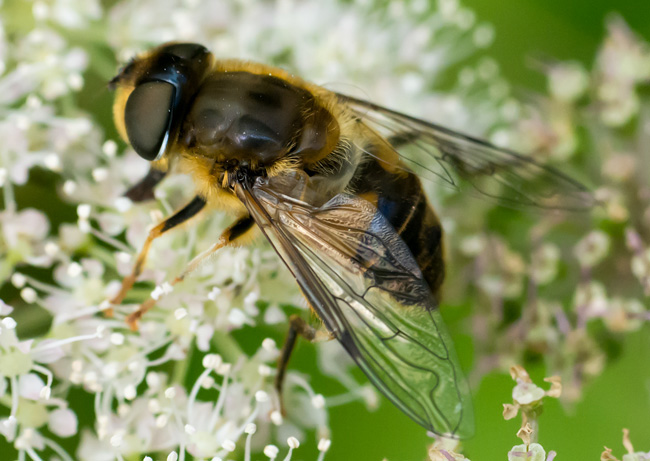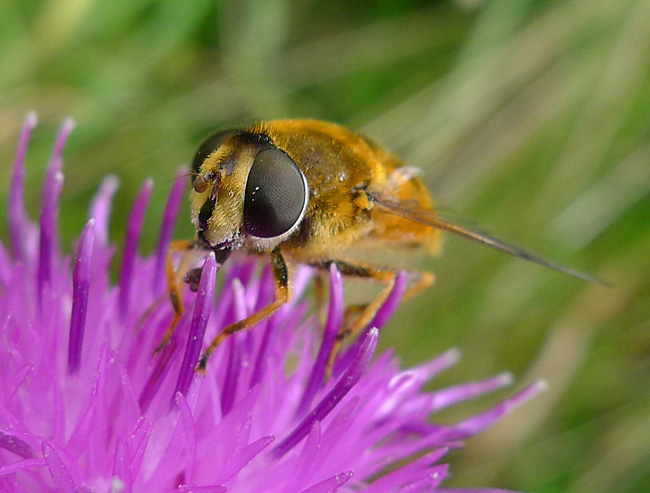
|
Common Drone Fly
|
||
|
Taken at Hogganfield Loch on 15th September 2021 using Nikon D500 with Sigma 600 mm zoom lens.
|
 |
|

| Taken at Baron's Haugh on 11th August 2015 using Panasonic Lumix LX5 in macro mode. |  |

| Taken at Baron's Haugh on 19th August 2015 using Panasonic Lumix LX5 in macro mode. |  |

| Taken at Baron's Haugh on 15th September 2015 using Nikon D5200 - 18-55 mm lens with Raynox DCR-250 Macro Attachment |  |

| Commmon Drone Fly. |
| Species: Order: Family: Local Names: |
Eristalis tenax. Diptera. Syrphidae. |
| Food: Wingspan: Length: Habitat: Flies/Found: Feature: |
Adults feed on flowers, especially those of carrot and fennel. 15 mm. 10 - 12 mm. The larva of E. tenax lives in drainage ditches, pools around manure piles, sewage, and similar places containing water badly polluted with organic matter. The larva likely feeds on the abundant bacteria living in these places. March onwards. However, the adults hibernate in the winter, and they can therefore also be seen on mild days in January and February. The adult fly that emerges from the pupa is harmless. It looks somewhat like a drone honey bee, and likely gains some degree of protection from this resemblance to a stinging insect. The adults are called drone flies because of this resemblance. |